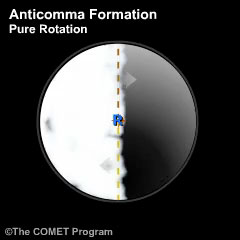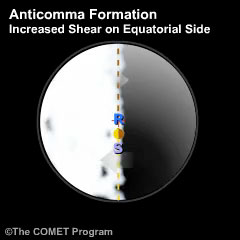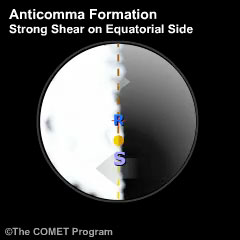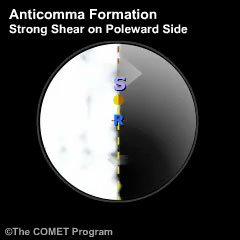Pre-Lab: Identifying Vorticity Centers » Vorticity Minima Patterns
The shape of an anticyclonic anticomma pattern reveals the location of vorticity minima. The tabs below contain animations of a cloud area superimposed with rotation and shear, similar to those in the previous section. Again, X represents the total vorticity maximum, S represents shear, and R is rotational vorticity. Explore these common patterns of vorticity minima on satellite by clicking through the tabs and watching the animations.
Given pure rotation, the conceptual cloud line will evolve symmetrically. The vorticity minimum (N) is at the center of rotation, which is also the point of inflection. The rotational vorticity is the sole component of vorticity - there is no shear vorticity component.
Now we will add shear to the rotation. Winds are increasing to the south of the image center. Now, the point of inflection and total vorticity maximum are shifted toward the region of greater shear. The concave arc in the location of the wind maximum is enhanced. The convex arc to the north is unchanged, as it exists via the rotational component of the vorticity at the center of the circle.
If we increase the equatorward shear even more, the pattern becomes becomes more pronounced as below.
Finally, if the shear is on the poleward side of the rotation, the same shifting of the point of inflection/total vorticity maximum toward the region of shear occurs. In contrast, however, the convex arc in the location of the wind maximum is enhanced. The concave arc is not enhanced and is created purely by the rotational component of the vorticity, which remains unchanged and located at the center of the circle.



